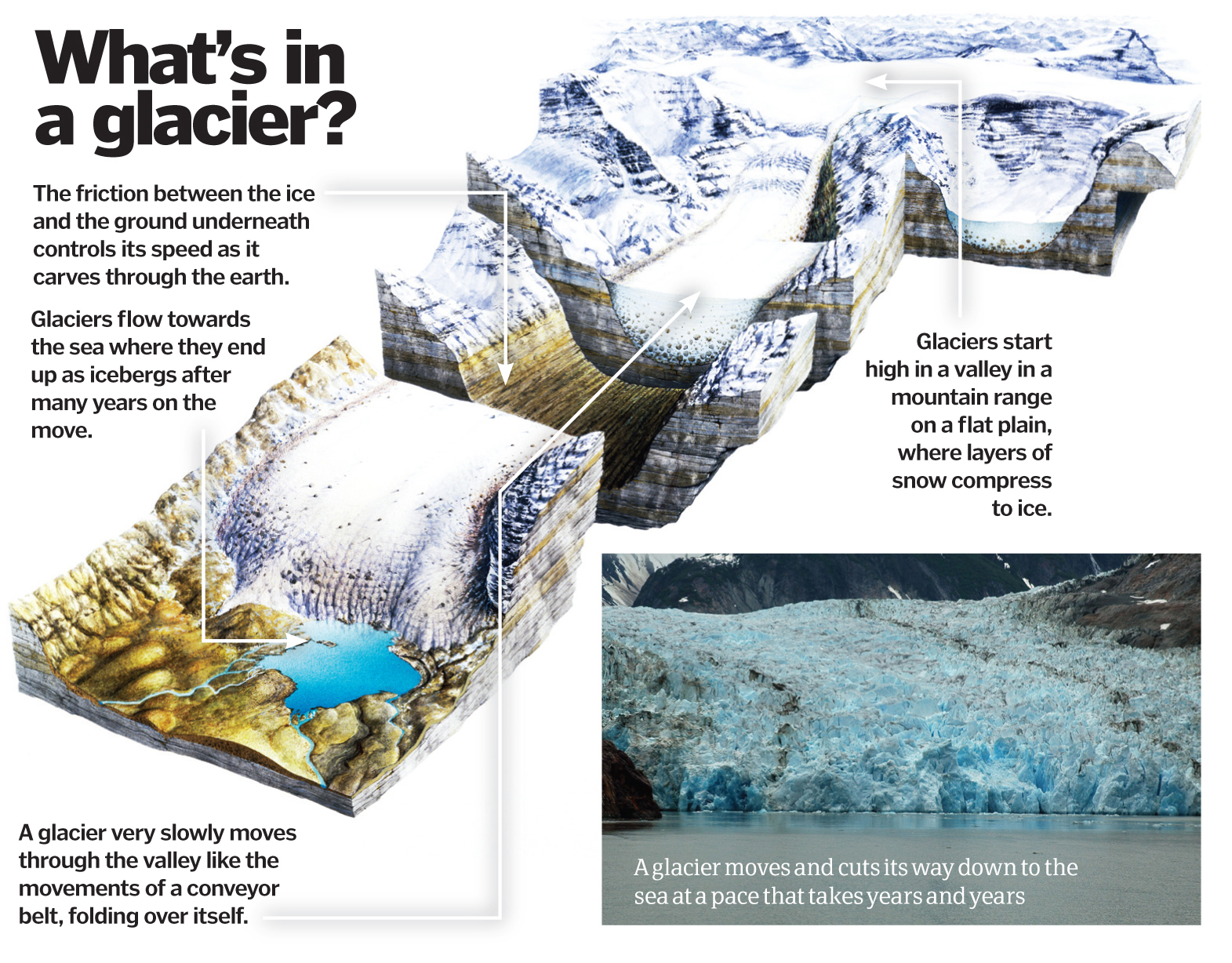Glaciers That Form In Mountainous Areas Are _______________________
Glaciers That Form In Mountainous Areas Are _______________________ - Valley glaciers, also known as alpine glaciers, are found in mountainous regions. Glaciers can form in areas where summer temperatures are too low for all of the snow to melt. Alpine glaciers develop in high mountainous regions, often flowing out of icefields that span several peaks or even a mountain range. There are three general types of glaciers: A glacier is an accumulation of ice and snow that slowly flows over land. Most alpine glaciers are located in the world’s major mountain ranges such as the andes, rockies,. Wildlife galore60 glaciers nearbysearch by amenity
There are three general types of glaciers: Alpine or valley glaciers, ice sheets, and ice caps. Valley glaciers, also known as alpine glaciers, are found in mountainous regions. Basal till refers to till carried in the base of the glacier.
Glaciers can form in areas where summer temperatures are too low for all of the snow to melt. The largest mountain glaciers are found in arctic. When the weight of the ice and snow (thickening snowfield) becomes great enough, they. They sculpt mountains, carve valleys, and move vast quantities of rock and sediment. Glaciers also exist on the fringes of ice sheets. Basal till refers to till carried in the base of the glacier.
Alpine glaciers make flattened landscapes, and continental glaciers make uneven landscapes. A glacier is an accumulation of ice and snow that slowly flows over land. Alpine glaciers form in mountainous areas either at high elevations or near cool and wet coastal areas. Alpine glaciers form smooth landscapes, and continental glaciers form hilly landscapes. / ˈɡlæsiər, ˈɡleɪsiər /) is a persistent body of dense ice that is constantly moving downhill under its own weight.
Valley glaciers, also known as alpine glaciers, are found in mountainous regions. It is the largest ice mass on earth and has mostly ice sheets with some valley glaciers. Alpine glaciers are frozen rivers of ice, slowly flowing under their own weight down mountainsides and into valleys. The study area lies between latitude n 30.985 and longitude e 79.642, covering an area of ~ 48 km 2 near the line of actual control (lac) between india and tibet.
Alpine Glaciers Form Smooth Landscapes, And Continental Glaciers Form Hilly Landscapes.
Ablation till represents till left behind as the glacier melts. A glacier is an accumulation of ice and snow that slowly flows over land. The study area lies between latitude n 30.985 and longitude e 79.642, covering an area of ~ 48 km 2 near the line of actual control (lac) between india and tibet. Alpine glaciers are frozen rivers of ice, slowly flowing under their own weight down mountainsides and into valleys.
Glaciers Also Can Be Found Closer To The Equator In Some.
There are three general types of glaciers: They sculpt mountains, carve valleys, and move vast quantities of rock and sediment. It is the largest ice mass on earth and has mostly ice sheets with some valley glaciers. / ˈɡlæsiər, ˈɡleɪsiər /) is a persistent body of dense ice that is constantly moving downhill under its own weight.
Alpine Glaciers Make Flattened Landscapes, And Continental Glaciers Make Uneven Landscapes.
In the past, glaciers have. Glaciers occupy high peaks, mostly in the southern. Alpine glaciers develop in high mountainous regions, often flowing out of icefields that span several peaks or even a mountain range. Most alpine glaciers are located in the world’s major mountain ranges such as the andes, rockies,.
A Glacier Forms Where The Accumulation Of.
When the weight of the ice and snow (thickening snowfield) becomes great enough, they. Valley glaciers, also known as alpine glaciers, are found in mountainous regions. Alpine or valley glaciers, ice sheets, and ice caps. Glaciers are moving bodies of ice that can change entire landscapes.
Alpine glaciers develop in high mountainous regions, often flowing out of icefields that span several peaks or even a mountain range. The study area lies between latitude n 30.985 and longitude e 79.642, covering an area of ~ 48 km 2 near the line of actual control (lac) between india and tibet. Ablation till represents till left behind as the glacier melts. / ˈɡlæsiər, ˈɡleɪsiər /) is a persistent body of dense ice that is constantly moving downhill under its own weight. Alpine glaciers make flattened landscapes, and continental glaciers make uneven landscapes.




.jpg)

/464180535-58b9c9355f9b58af5ca6a301.jpg)
